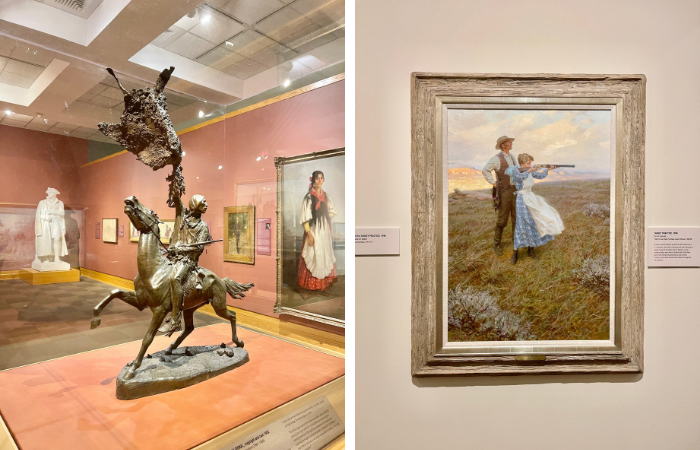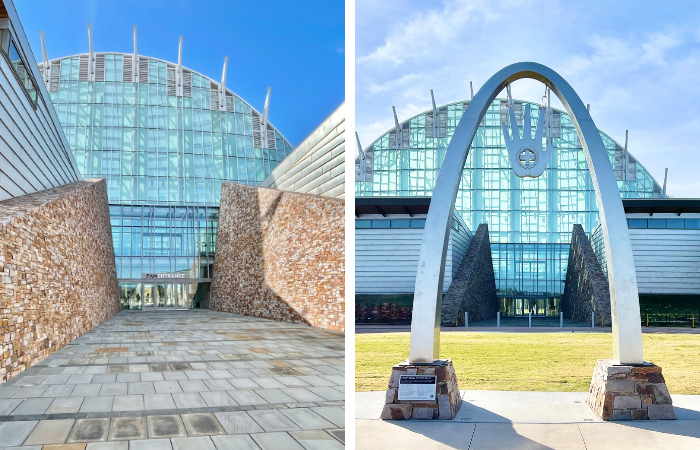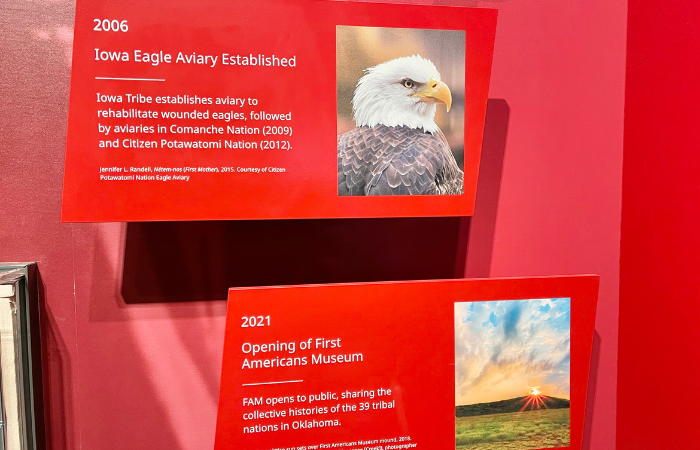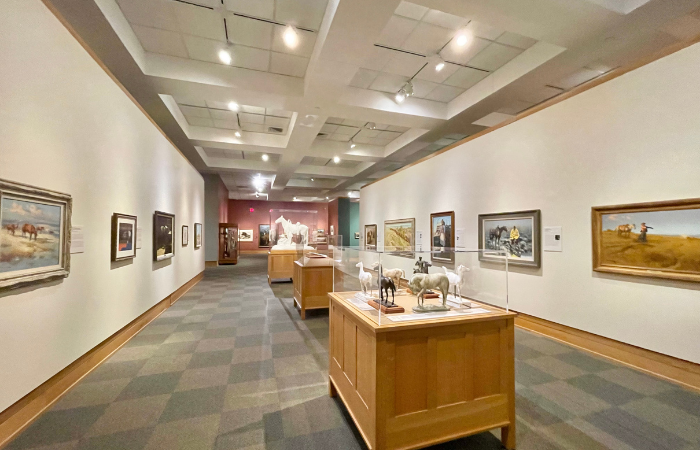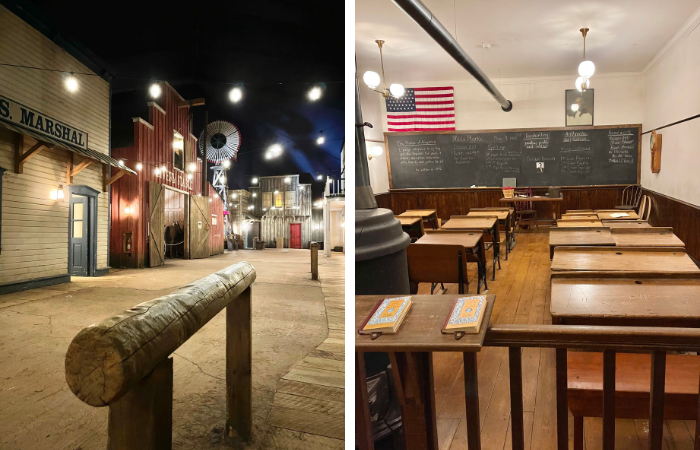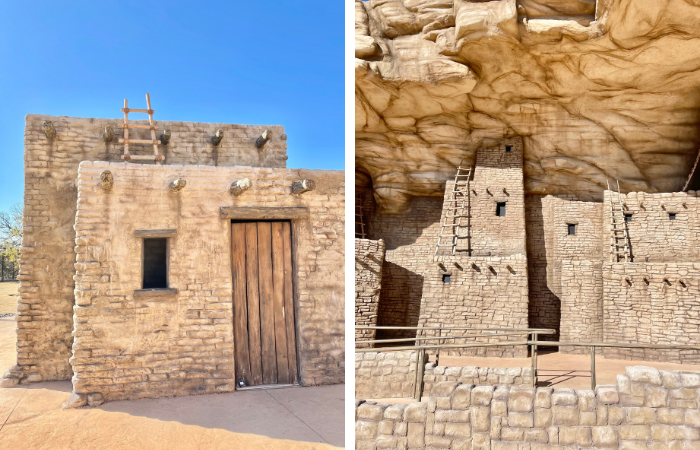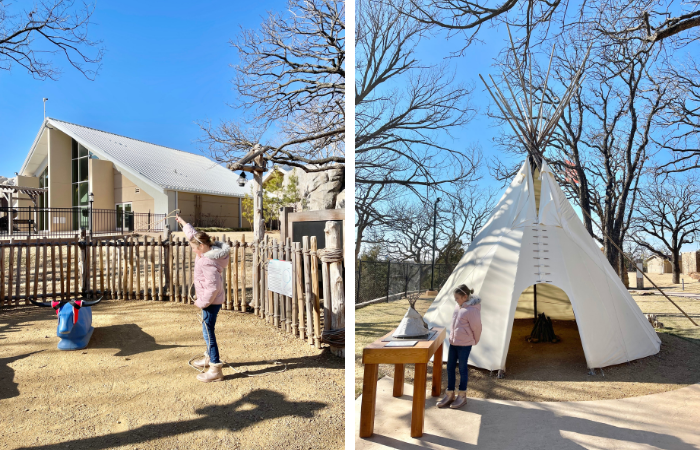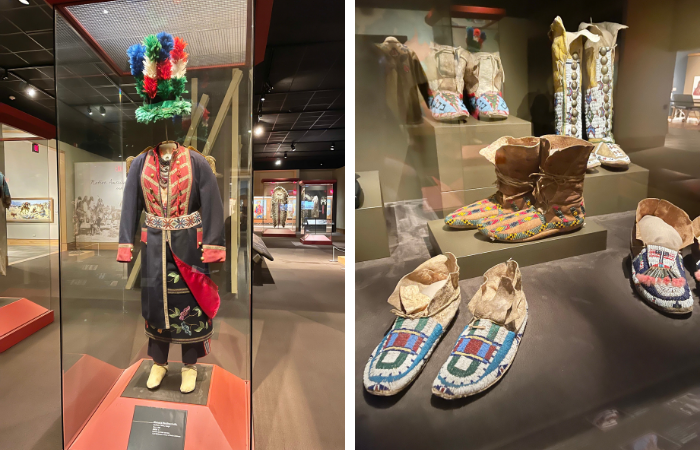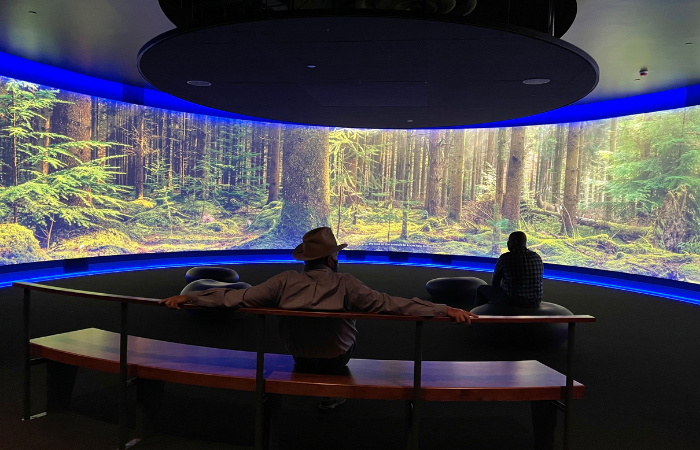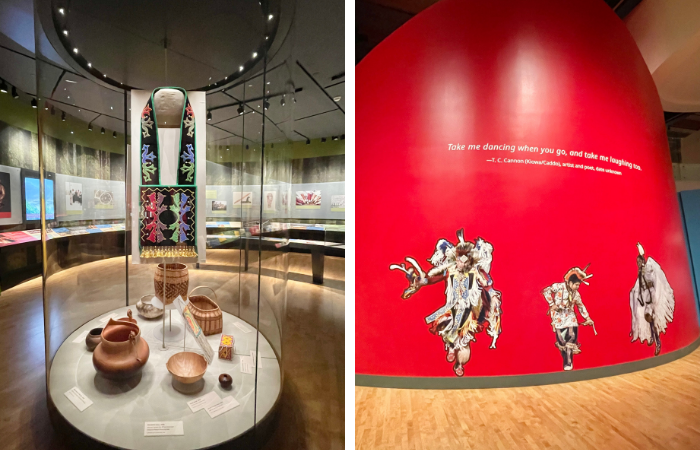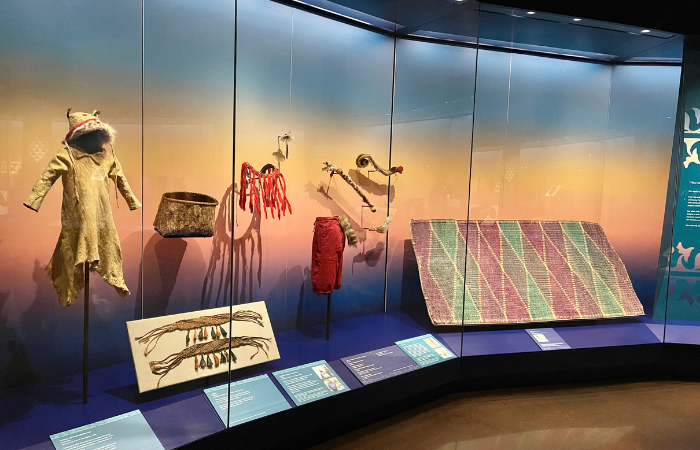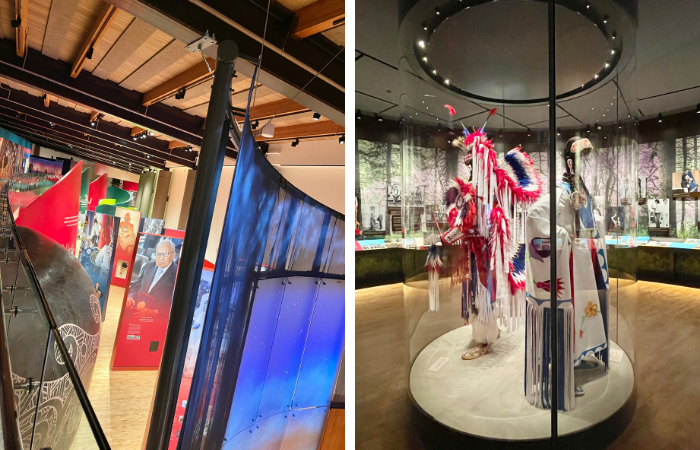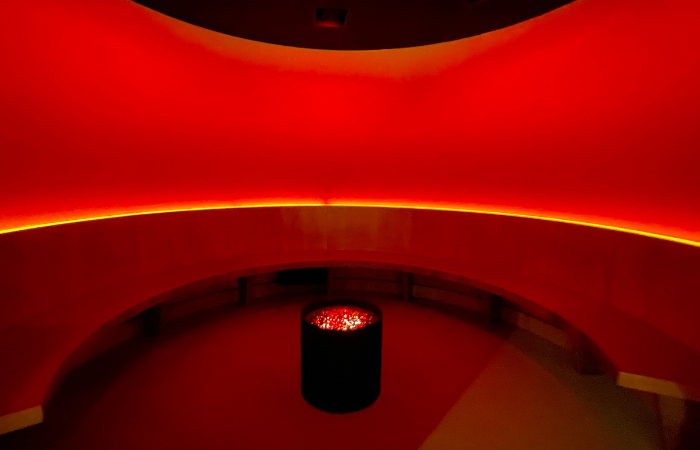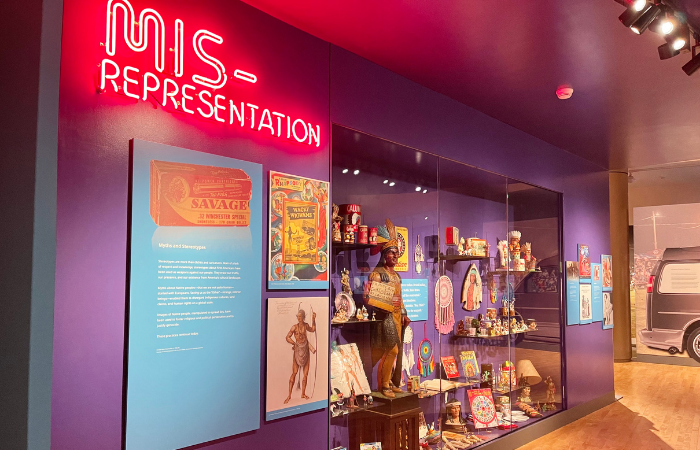Find Out the REAL Story of How the West Was Won (& Lost) at the First Americans Museum & Cowboy Hall of Fame in OKC
Western culture has been more popular than ever lately (thanks Yellowstone & 1883??) and living in Oklahoma it doesn’t seem as far-fetched and exotic as it probably does to other places in the country.
When I mention I’m from Oklahoma, people’s first response is often something like “are there a lot of cowboys and Indians there?” Well, actually yes. But it’s probably not how you’re imagining.
Hollywood has painted a vivid western legend. Taming the frontier, settling the west, and everything that went along with that. There were courageous cowboys, brave pioneers, and savage natives. Right? Well, maybe there’s a little more to it than that.
If you’re interested in learning and experiencing the actual history of the west, there are two museums in Oklahoma City that you need to visit. Together I think they tell the full story of how the west was won. And lost.
Officially named the National Cowboy & Western Heritage Museum, but more commonly called the Cowboy Hall of Fame, this museum is one of Oklahoma City’s premier attractions and has been since 1955. The museum uses its vast collection of art, artifacts, and cultural exhibits to promote interest in the legacy of the American West. The white settler’s American west. It’s a great museum, but it’s incomplete.
Across town, the First Americans Museum (FAM) just opened in 2021 after decades of planning. It tells the often overlooked history of the First Americans. The Native Americans. The American Indians. The people who were here first. The state of Oklahoma today is home to 39 distinct tribes or First American Nations. Only a few of them are indiginous to the land that is now Oklahoma. The rest were all forcibly removed from their ancestral homelands and relocated to Indian Territory. “Oklahoma” comes from the Choctaw words “Okla” and “Homma.” Red People. It’s a sad story, but an important one. You can’t understand the “American West” without it.
Personal Connections
I’m a member of the Iowa Tribe, one of the 39 tribes that calls Oklahoma home. Our tribal lands are in Perkins, OK and my family still owns a 40 acre allotment there. I was excited to see this plaque on one of the major timelines in the FAM as my uncle was the one who started the aviary!
What You Need to Know about the Cowboy Hall of Fame
At the Cowboy Hall of Fame, you’ll find everything from world class art galleries to more cultural exhibits to a full sized old west town and plenty of interactive outdoor activities. It’s the kind of place you can bring the kids and the grandparents.
I’ve been here several times, both as a child and as an adult and there’s a LOT to see here. You could easily spend 2-3 hours here.
The museum has a great collection of western art (both paintings and sculptures), but I think most people probably spend more time in the cultural exhibits. There’s a lot to learn about what cowboys actually did/do (hint: they worked cattle as opposed to serving justice throughout the wild west) and ranch life. There’s a whole gallery about cowboys in the movies which explains a lot of the differences between the western lore that Hollywood created and the reality of what was plus a bit about the US Army’s involvement in western expansion. There’s also a large exhibit on the history and culture of the rodeo.
If you have kids, you’re going to want to pace yourself so you have plenty of time and energy left to explore the full sized western town, Prosperity Junction, and all of the different types of native dwellings that they’ve recreated outside. Also kids will enjoy being able to try their hand at roping a steer.
There’s a small cafe where you can grab drinks and snacks to keep you going and the gift shop really is a standout.
My only criticism: for a museum that’s titled “Western Heritage Museum,” there’s verrrrrry little said about Native Americans at all (a small gallery with some beaded artifacts) and really nothing about what happened to them which is a huge oversight when you’re talking about “the west.” Not uncommon to see really, but a huge hole nonetheless…which is my recommendation is to pair this museum with the First Americans Museum.
The museum is open 7 days a week 10AM-5PM (12PM-5PM on Sundays) and tickets are $12.50/adult, $9.75/student (with ID), $5.75/child (6-12), 5 and under are free.
What You Need to Know about the First Americans Museum
First of all, this museum is BEAUTIFUL. This is a world class museum experience, not just a highlight of Oklahoma City. People who have visited the best museums in the world will be impressed not just with the content of this museum, but with the presentation. They really hit it out of the park.
Next up, the premise. I’m not sure I can say it any better than what’s written at the entrance:
This has always been Indian Country. Welcome! First Americans Museum (FAM) honors the ancestors who lived here before it was Oklahoma.
We honor the Indigenous people who inhabited these lands before the United States was established. They include the Apache, Caddo, Tonkawa, and Wichita. We also honor those tribes who have a historical relationship to this region, including the Comanche, Kiowa, Osage, and Quapaw. We acknowledge the Muscogee (Creek) and Seminole who were once assigned the land upon which FAM resides.
Today, 39 distinct tribal nations reside in Oklahoma. We are as diverse culturally and linguistically as the nations on the European continent.
We are not in Oklahoma by choice. Many of our people were removed and relocated from the far reaches of the contiguous United States. After nearly 200 years, our histories and cultural lifeways are now interwoven into this landscape.
The Choctaw people call this land Okla Homma. Okla Homma means “red people,” the place we now call home.
And that’s what this museum is about. Telling the story of the tribes who called Oklahoma home before, those who have called it home since, and the history of how it all came to be.
It’s factual, and it’s emotional. This museum pulls no punches. There’s no anger and no blame, but an overwhelming number of details and information that will make you sad, maybe angry, and hopefully get you thinking. Especially if this is a new perspective for you.
While the galleries make excellent use of visuals, artifacts, video, and interactive components, there is a massive amount of reading to do. But it’s also structured well and flows easily so you always know where to go next. Because of the sheer amount of information presented in text format, it makes this a museum that you can go back to several times before you’ve gotten everything out of it.
I really like the way this museum is designed. The first main gallery (it’s extensive) is so heavy (both the subject matter and the amount of information presented), but it doesn’t leave you there. You progress through a couple of galleries that detail the progression of Native American culture and how modern day natives have both assimilated into American society and still maintained their unique cultural identities. This museum doesn’t just look towards the past, it holds plenty of space for the future.
Don’t leave without visiting the upstairs galleries. They feature objects on loan from the Smithsonian National Museum of the American Indian which were collected from Oklahoma over a century ago.
In addition to displaying really beautiful objects, there’s a lot of bluntness about how native possessions were originally acquired and how they were treated including human remains. It’s an interesting study and I suspect a topic we’ll be seeing more in the future. The Dallas Museum of Art has a really fascinating temporary exhibit about the excavation of the Spiro Mounds (also in Oklahoma) and the differences between archaeologists and grave robbers and who has the right to collect, own, and display objects belonging to other cultures.
It’s positive in nature though and they’ve done quite a bit of work to trace some of the belongings back to their original owners and who those descendents would be today.
The FAM is also ramping up to do a lot of community events including summer camps for kids and monthly cultural workshops. Since they’ve opened in the fall of 2021, they’ve offered weekend workshops on hat beading, making traditional circle skirts, moccasins, etc.
To be 100% clear, this isn’t a museum just for natives. Most of us already know our history (although there’s so much to learn here). This is a museum for everyone interested in learning about American history.
The FAM is open every day but Tuesdays and admission is $15/adult, $10/tribal members, seniors, military, and students, $5/child (4-12), 3 and under are free.
More posts about Oklahoma:
High Heels & Tractor Wheels: A Guide to the Pioneer Woman’s Pawhuska
Where to See Tulips in Tulsa: Tulsa Botanic Garden, Philbrook & Other Spots
Afternoon Tea in Tulsa: Having a High Time at Historic Harwelden Mansion

